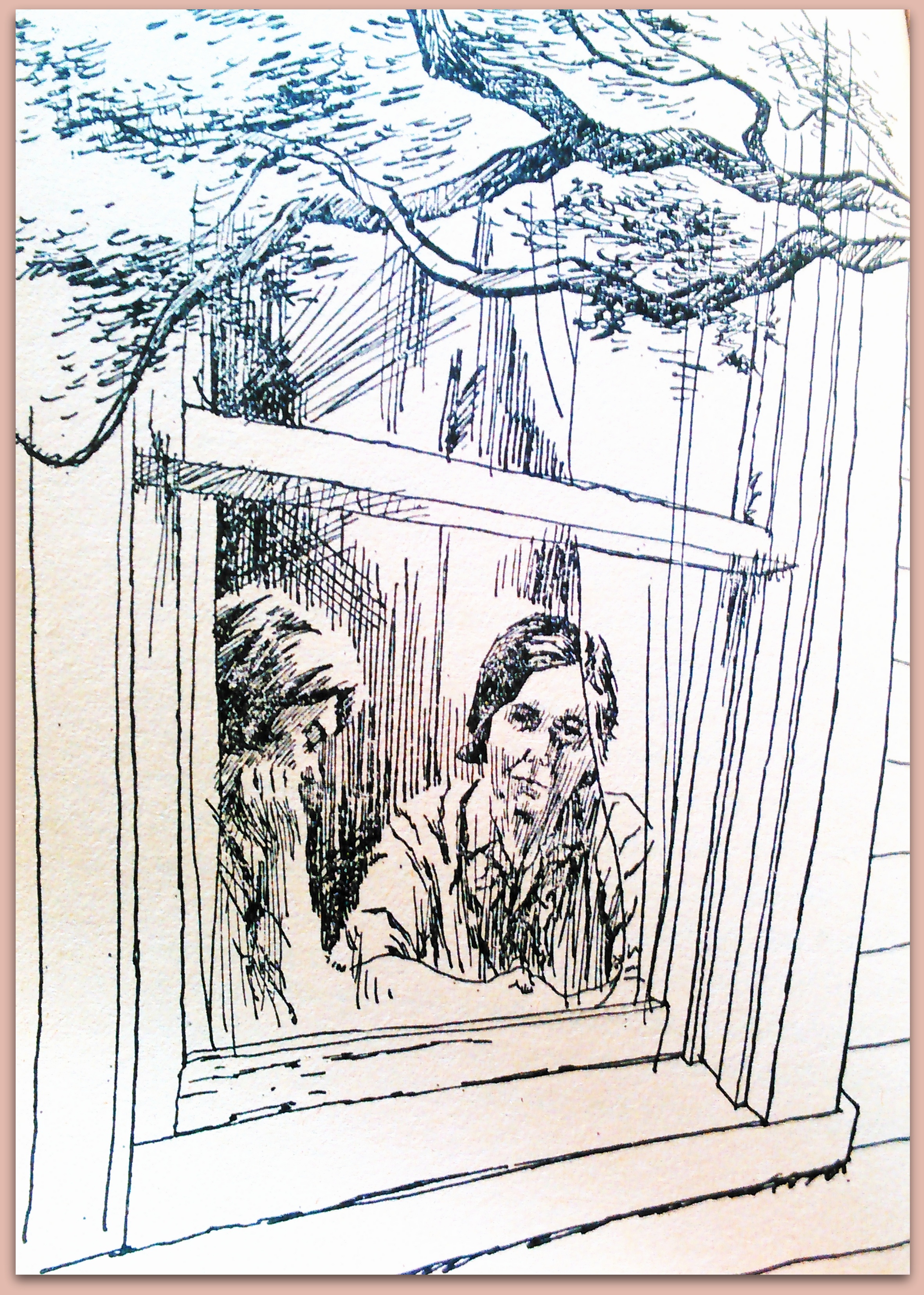

Queenie Peavy is a puzzle to everyone but herself. SHE knows why she fires stones at anything and everything -- isn't she the best shot in Georgia? SHE knows why she is defiant with her teachers and deliberately mean to her schoolmates -- aren't they all against her? And Queenie doesn't care -- not Queenie Peavy! The fact is that Queenie has a chip on her shoulder too big for a lonely thirteen year old to carry. Times have "turned off hard" for everybody in the early 1930s, and they are especially hard for a girl whose idolized father has been in jail and whose mother works long hours. But in spite of all that, Queenie can be happy, for Queenie has character.
~ from back cover
1930s Georgia. Thirteen year old tomboy Queenie Peavy is known around town for her major attitude and her affinity for chucking pebbles at things. She takes pride in having the best throwing arm (with the best aim) in town and can't understand why everyone is so hung up on her not being more ladylike. But Queenie isn't talking to anyone about what's really bothering her inside.
With her father in jail and her mother forced to work extra long hours at the canning plant to make ends meet, Queenie can't help but feel that lately the whole world seems against her! When she goes to school, she gets teased for such things as only having salted pork on biscuits for lunch every day. To counteract the teasing about her visible poverty, Queenie tries to take up chewing tobacco to show how tough she is, but no one is all that impressed by it.
She knew that at times she was pitied, and that made her almost as mad as anyone saying mean things about where her father was.
Queenie's classmate Martha, nicknamed "Little Mother" for her insistence on always focusing on what is right and good, starts preaching to the other students about the importance of showing love and compassion for everyone. She points out that she wishes she could have 2 biscuits like Queenie every day, since Martha comes from a family of 8 siblings, so there's rarely enough food to go around for everyone in their house. A lesson Burch slips in there for his young readers --- compassion is important because no matter how bad off your life feels, someone out there ALWAYS has it worse.
Classmate Cravey Mason seems to be the worst of Queenie's bullies. But even around him and his antics, Queenie chides herself for not being better at taking things in stride, letting things blow over. Instead, she often allows herself to be ruled by her hot temper. One thing to remember, her teacher points out, is that when it comes to bullies, "it's their sadness more than yours that's fueling their behavior." When Queenie's temper escalates an incident between her and Cravey too far, Queenie does her best to cool down and rectify matters, offering him an apology for her actions. But the damage is done and Cravey has the itch for revenge. What began as simple schoolyard rivalry soon snowballs to the point of Queenie facing possible criminal charges! Queenie professes her innocence time and again but that pesky troublemaker rep of hers precedes her. Now she'll have to rely on brains instead of brawn to get her side of the story properly heard!
"I'll succeed!" she said to herself so emphatically that she wondered if she had said it aloud....Then she went back to thinking, "I'll make something of myself! There's no telling what I can do if I try. Just you wait, Queenie Peavy, just you wait!" She knew she would always have to be reminding herself to control her temper, but she could learn to do that...and maybe folks who laughed at other people's misfortunes really did hurt themselves most of all. Surely sooner or later they would see how unfair they had been. Anyway, from now on she would tell herself, "It's their sadness instead of mine," the way Mr. Hanley had suggested.
She smiled when she realized what a lecture she had given herself. "I preached myself a sermon," she thought, "and the good part was that I listened." She admitted that most of it had been a rehashing of what grownups had tried to tell her all along.
Not a half bad story here. It was first released back in the mid-1960s and the writing style does show some signs of staleness when compared to what's on the middle grade market now. The plot is not action packed, instead choosing to be driven more by Queenie's emotions and the choices she makes because of those emotions. Still, there are moments of school trip / school yard rough-housing that even kids today will likely still relate to. I think what DOES hold up here are the topics Burch addresses that will get readers thinking. Topics such as bullying, showing compassion for those less fortunate, hearing all sides of a story before you pass judgement, those sorts of conversations that definitely need to be started early on. I think young female readers especially will benefit from the story of Queenie, learning that a woman should come to know and embrace her inner strength and her specific skills and talents, but said woman should also be encouraged to learn how to use that strength and those skills to create environments of love and joy, not rage and pain. The overall feel of the story, from time period to plot points, reminded me a bit of Dovey Coe by Frances O'Roark Dowell. Dovey Coe was written after this book of course, I only mention it to say if you read & liked Dovey Coe, you might likewise enjoy this story.
The text, at least on the Dell paperback edition I read from, is periodically enhanced by lively pencil illustrations done by Jerry Lazare. Just a few examples below:




 1
1








